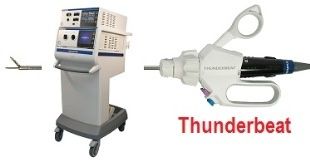The field of medical technology is continuously evolving, with new advancements emerging regularly to improve patient care and treatment outcomes. Among the innovative technologies that have gained significant attention in recent years are ultrasonic and advanced BiPolar energies. Ultrasonic energy harnesses high-frequency sound waves, while advanced BiPolar energy utilizes electrical current. Integrating these two energies has shown promising results in various medical applications, including surgery, tissue ablation, and wound healing. This essay explores the principles, benefits, and challenges associated with the integration of ultrasonic and advanced BiPolar energies, highlighting its potential to revolutionize medical practices.
Introduction
Medical procedures often rely on the use of energy sources to achieve desired outcomes. Ultrasonic energy, characterized by high-frequency sound waves, has been widely employed for diagnostic and therapeutic purposes. Advanced BiPolar energy, on the other hand, utilizes electrical current to generate heat and perform precision tissue cutting. By integrating these two energies, medical professionals can leverage their unique properties and create synergistic effects for improved patient care.
Principles of Ultrasonic Energy
Ultrasonic energy operates on the principle of mechanical vibrations produced by high-frequency sound waves. These waves are generated by piezoelectric crystals within the ultrasonic device and propagate through the tissue. As the waves encounter different tissue densities, they produce various effects such as thermal, mechanical, and cavitation.
Principles of Advanced BiPolar Energy
Advanced BiPolar energy relies on the application of electrical current to tissues. This energy source utilizes two electrodes, one for current delivery and the other for return, ensuring controlled and localized tissue heating. The heat generated by electrical resistance leads to coagulation, cutting, or ablation of tissue, depending on the desired outcome.
Integration of Ultrasonic and Advanced BiPolar Energies
Complementary Effects
By integrating ultrasonic and advanced BiPolar energies, medical practitioners can harness the synergistic effects of both technologies. Ultrasonic energy can facilitate tissue dissection, emulsification, and liquefaction, while advanced BiPolar energy provides precise cutting and coagulation. The combined use of these energies allows for improved surgical precision, reduced blood loss, and enhanced tissue healing.
Simultaneous Activation
The integration of ultrasonic and advanced BiPolar energies enables simultaneous activation, enhancing the efficiency of medical procedures. Surgeons can utilize ultrasonic energy for tissue dissection while simultaneously applying advanced BiPolar energy for hemostasis, reducing procedural time and optimizing patient outcomes.
Enhanced Safety
The integration of these energies also enhances safety by minimizing collateral damage to surrounding tissues. Ultrasonic energy's selective action on tissues reduces the risk of thermal injury, while advanced BiPolar energy's localized heat generation reduces unintended tissue damage. This integration offers greater control and precision, particularly in delicate procedures.
Applications of Integrated Ultrasonic and Advanced BiPolar Energies
Surgical Procedures
The integration of ultrasonic and advanced BiPolar energies finds extensive applications in surgical procedures. In laparoscopic surgeries, for instance, the combined energy sources enable efficient dissection and coagulation. Similarly, in open surgeries, the integration allows for precise cutting, vessel sealing, and tissue coagulation, resulting in improved surgical outcomes.
Tissue Ablation
The integrated energy sources have proven beneficial in tissue ablation procedures, such as tumor removal or treatment of benign conditions. Ultrasonic energy facilitates tissue emulsification, liquefaction, and cavitation, allowing for effective removal or ablation. Advanced BiPolar energy complements this process by providing precise cutting and hemostasis, minimizing bleeding and improving patient recovery
Wound Healing
Integrated ultrasonic and advanced BiPolar energies also offer promising applications in wound healing. Ultrasonic energy promotes cellular activity, tissue regeneration, and angiogenesis, facilitating the healing process. The controlled application of advanced BiPolar energy aids in wound debridement, removing necrotic tissue and promoting a clean wound bed for faster healing.
Dental Procedures
The integration of ultrasonic and advanced BiPolar energies has found utility in various dental procedures. Ultrasonic energy assists in efficient scaling and cleaning of teeth, while advanced BiPolar energy aids in precise soft tissue cutting and hemostasis during oral surgeries. The combination of these energies improves procedural outcomes, patient comfort, and reduces the risk of complications.
Benefits of Integration
Enhanced Precision and Efficiency
The integration of ultrasonic and advanced BiPolar energies enables medical professionals to achieve greater precision and efficiency in various procedures. The complementary effects of these energies result in improved tissue dissection, coagulation, and ablation, minimizing damage to surrounding tissues and optimizing patient outcomes.
Reduced Procedural Time and Cost
Simultaneous activation of ultrasonic and advanced BiPolar energies reduces procedural time, leading to improved workflow and cost-effectiveness. The ability to perform multiple functions with a single device streamlines surgical procedures, reducing the need for instrument exchanges and minimizing overall procedural time.
Improved Patient Safety and Recovery
The integration of these energies offers enhanced patient safety by minimizing collateral damage, reducing blood loss, and decreasing the risk of complications. With precise cutting and coagulation capabilities, medical professionals can perform procedures with greater accuracy, ensuring faster patient recovery and improved postoperative outcomes.
Challenges and Future Directions
Despite the numerous benefits, the integration of ultrasonic and advanced BiPolar energies presents certain challenges. These include device compatibility, operator training, and cost considerations. Integration may require modifications to existing devices or the development of specialized instruments. Moreover, healthcare professionals need adequate training to maximize the potential of this technology and ensure safe and effective utilization.
Future directions for the integration of ultrasonic and advanced BiPolar energies involve advancements in device design, improved energy delivery systems, and expanding the range of applications. Ongoing research and development efforts aim to optimize the integration of these energies, further enhancing their efficacy and expanding their utility in medical procedures.
Conclusion
The integration of ultrasonic and advanced BiPolar energies represents a significant advancement in medical technology. This innovative approach offers a range of benefits, including enhanced precision, reduced procedural time, improved patient safety, and accelerated recovery. The complementary effects of ultrasonic and advanced BiPolar energies in surgical procedures, tissue ablation, wound healing, and dental treatments have the potential to revolutionize medical practices. As further research and development continue, the integration of these energies is expected to become increasingly prevalent, improving patient outcomes and shaping the future of medical interventions.
